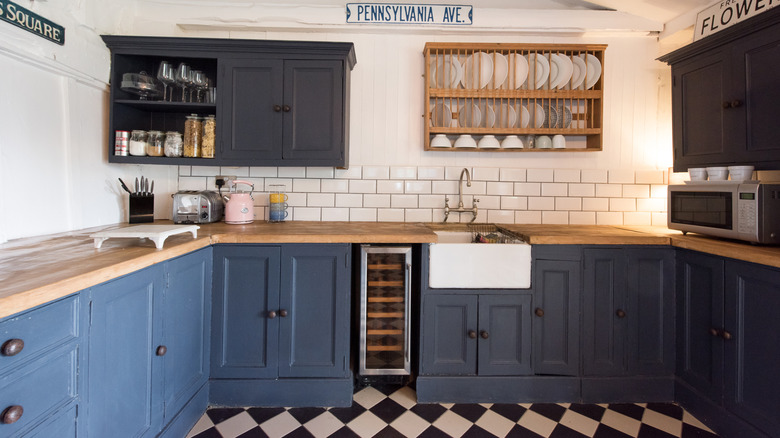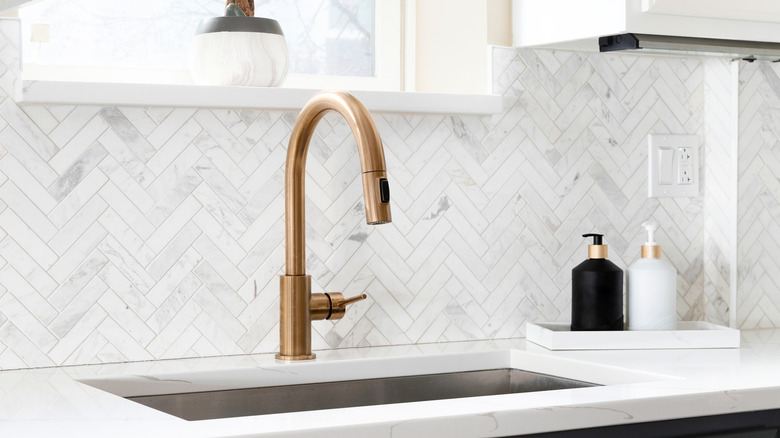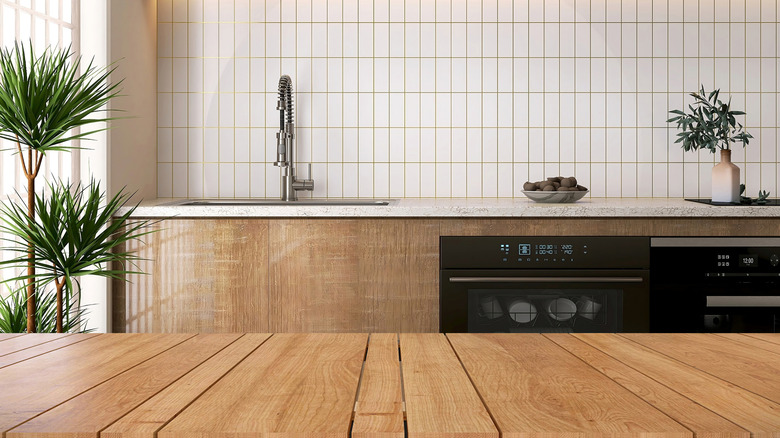Are Mosaic Backplashes A Bad Choice For Tiny Kitchens? Here's What To Know
Having a small kitchen should not be an obstacle or frustration within your home. While there may be fixtures and decor you have to get creative with, there are plenty of clever tricks and tips to make your space feel bigger while also providing a functional and stylish layout. One factor to consider when designing your cooking space is your backsplash, as this can really make or break a tiny kitchen. If you are usually a fan of mosaic tiles, it's important to take into consideration everything from the color to the pattern you're using, as some palettes or designs might shrink your space. While it's generally considered that mosaic backsplashes using small, colorful tiles can be a bad choice for tiny kitchens, as they can create a cluttered look, mosaics can still work if you choose glossy materials and softer solid colors. Installing the tiles in more creative patterns can also be a simple way to extend and lighten the room. However, everything from your countertop materials to the size of your backsplash gap will affect your decision, so pick your tiles with care to get the ideal design.
Knowing how to balance tiles with the rest of your space is important. As mentioned above, your safest option is a neutral backsplash using your tiles to create more light and to brighten up any nooks and crannies that might be adding to the closed off vibes of a small kitchen. However, if you prefer to introduce more patterns or color, you do have options that will still work in tiny cooking areas.
Use neutrals and glossy tiles to brighten up a small kitchen
It's normal to be cautious of backsplashes in small kitchens. After all, you don't want to create a layout that is too over the top. The key to nailing a mosaic backsplash in your cooking space is to rely on the direction you install the tiles to create dimension and texture rather than bright or bold colors or patterns. Try using smaller, slimmer tiles and install them in a herringbone pattern so that you're still getting a stylish layout that draws in the eye without overwhelming your wall. If it's color you want, you might want to stick with softer neutral shades, and definitely avoid dark grout. Because a mosaic backsplash is usually arranged in a geometric pattern, adding heavy or bold grout can pull the attention toward the shapes rather than the whole cohesive layout, creating a boxy or stilted element that feels less inviting and cozy than other options.
If you're using colors outside a neutral palette, consider smaller tiles like penny round ones which create a more fluid layout. Light to medium blues could work, or black and white square tiles to build a checkered pattern for anyone who still wants more saturated colors. Iridescent and glass tiles are also a great option. Because these reflect light, they will enhance low lit areas and brighten them up.
Install tiles in patterns that elongate the space
The way you install your tiles matters, too. While most backsplash tiles are arranged in horizontal designs, opting for vertical tiles can help elongate the wall and contribute to making a small kitchen look and feel more spacious. These can be white, cream, beige, or other lighter neutrals with a glossy finish. If you don't have upper cabinets in your kitchen where your backsplash goes, you could also tile all the way to your ceiling to stretch the height even more.
One of the worst backsplash choices for your kitchen, if it's on the smaller side, is a multi-toned horizontal layout with darker shades and small rectangular tiles as it creates visual clutter. If you really want layered hues, try natural stone tiles with minimal designs or patterns to bring more dimension throughout. These could be the intrinsic designs found in granite or quartz, as these will give you a more natural ambiance over painted tiles that might be too heavy for your tiny space.


